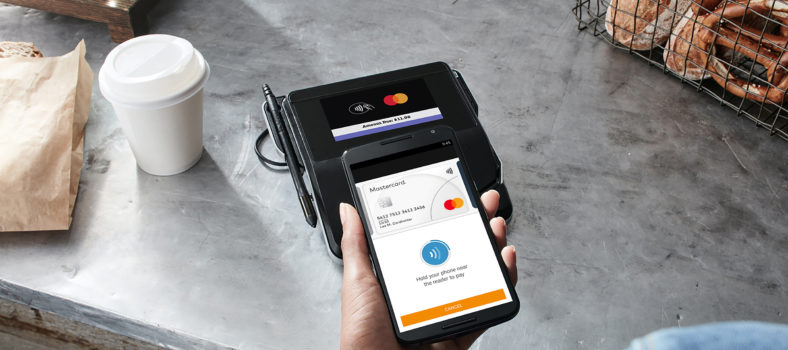 By Susan Perlmutter
By Susan Perlmutter
The pandemic has changed how we live, work, and the way we communicate. The financial industry, particularly, has faced some difficult issues, including payment processing delays, loan approval backlogs, and overall accessibility. Financial institutions have been inundated with customer service inquiries and have scrambled to provide timely communications and quality service. The moment of need was much less predictable than the demand itself – whether to access existing accounts or fund them with loans, deliver stimulus payments, and more. The past few months have forced consumers and account holders to rely on using the web, phone, or mobile apps to manage their finances, allowing them to transition yet another component of their daily lives in the form of ‘instant’ gratification. Now, consumers can receive instant access to their finances, transfers, bill payments, or loan repayments of various types.
While the initial response from banks was to offer swiftly expanded support by deploying new digital options, there has since emerged a longer tail opportunity to both improve customer service and potentially generate new revenue streams. Not so much in offering new products, but using their transaction platforms in an entirely new way – for communication, engagement, and conversion.
Since its inception, the banking industry has operated with the customer service model in mind. Traditionally, payments or transactions would take place at the counter or one-on-one with a banking representative in-person. However, technology has evolved, and the way we complete our daily transactions and communicate has too. According to McKinsey, 75 to 80 percent of transactional operations, and up to 40 percent of more strategic activities can be automated. What is considered to be more of a transactional platform for users, has the opportunity to emerge as one of the strongest methods of improving or sustaining a higher level of customer experience – especially online – which may pay dividends in the long run.
As consumers and banks become more acquainted with digital transactions and online resources, it seems logical that both parties will begin to accept and manage their banking communications online. Banks not only have the opportunity to leverage payment channels for reminders but for using consumer touchpoints to better serve and fulfill the needs of those clients – new products, retention, word of mouth references, and more. The data that will become available from consumers scrolling through the platform will allow banks to engage with them on their preferred terms. By doing right by the customer, merchants can do right by their business initiatives as well.
The Opportunity
As both parties transition and merchants and banks look for new ways to increase engagement, there are two audiences – current users and prospects – that must be considered. Each wants, and expects, a more personal, consultative caring level of service. Therefore, communications need to be timely, relevant and differentiated. Below are suggestions on how to engage with both parties.
It’s not always about sales. Accessible data has increased the opportunity for financial marketers to deliver personalized, targeted marketing campaigns for each individual. Payment platforms can be used as a gateway to cross-sell services and upsell new upgraded products; more importantly, the data allows financial providers to precisely pinpoint services relative to the user’s transactional history, likes, dislikes, and more. The power of AI allows for payment platforms to analyze a vast amount of data and insight on each unique customer enabling marketers to create highly targeted in-house campaigns based on their behaviors and personal preferences. At the same time, the platform can monitor the consumer’s response and engagement throughout, allowing marketers to plan future communications and outreach. Remember, it is essential not to be abrasive or overwhelming. The metrics must be carefully reviewed and genuinely leveraged to create an individualized experience for each customer.
Anytime service improves customer service. Customers want fast, personalized customer service. Once a consumer engages with your platform, you must gain and retain their trust. Remember, each person is one click away from leaving the platform and finding a new one. According to a study by SuperOffice, more than 41% of customers expect to have a live chat on your website, and for those visiting on mobile devices, it increases to 50%. Having the 24/7/365 support reassures consumers they are top-of-mind. In addition to live chat features, consider activating useful popup notifications. Notifications will not only help the users on the platform but also help reduce customer service calls, including balance alerts, fraudulent activity, credit reminders, deposit notifications, and more.
Create a one-stop-shop for content, news, and updates. Customers have opted to pay and use your platform, and now it’s time to offer them other services. Generate accessible, engaging, and interactive content in a library within the platform to meet them at the point of need and deliver relief, support, and positive sentiment. Nobody knows what will happen next – as a society, as a business, or as an industry sector. Its important financial providers remain agile and transparent in their communications, help their customers stay informed, and show they’re keeping their finger on the pulse.
Keep an open forum. Most people enjoy helping others, and public forums, provide users with the ability to do that. Additionally, those that are engaging and commenting within the platform can help merchants and financial providers determine how they, too, can improve, scale, or provide better service. Allowing people to socialize and comment on the company, offers a level of trust amongst the merchant and consumer, and illustrates strong brand transparency.
Before you consider implementing these tips, remember that it is essential your payments platform is updated, and you have a plan of action in place to execute. By further engaging with your consumers on a platform they frequent, they may naturally turn to merchants or financial providers and seek additional services – especially if marketing and data are being leveraged correctly in a non-invasive way, at the right time. And for merchants, it’s the perfect time to think about their payment platforms as not just a transaction processor, but a new profit maker.
Susan Perlmutter is Chief Revenue Officer of REPAY (Nasdaq: RPAY), a leading provider of integrated payment processing solutions to verticals , banks, and credit unions that have specific transaction




